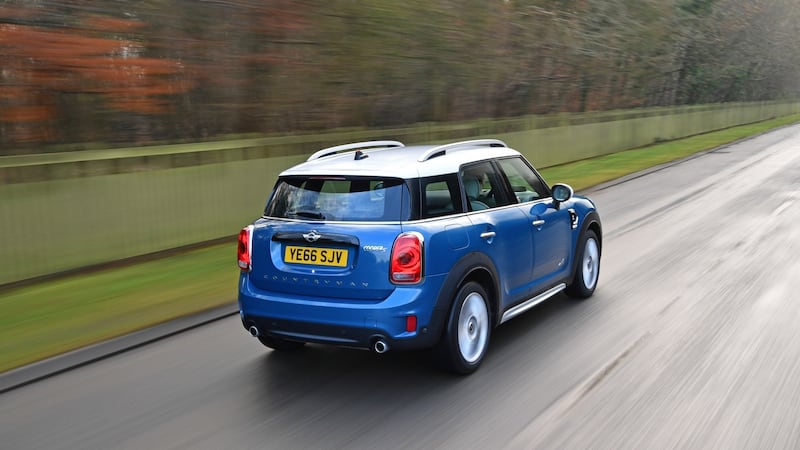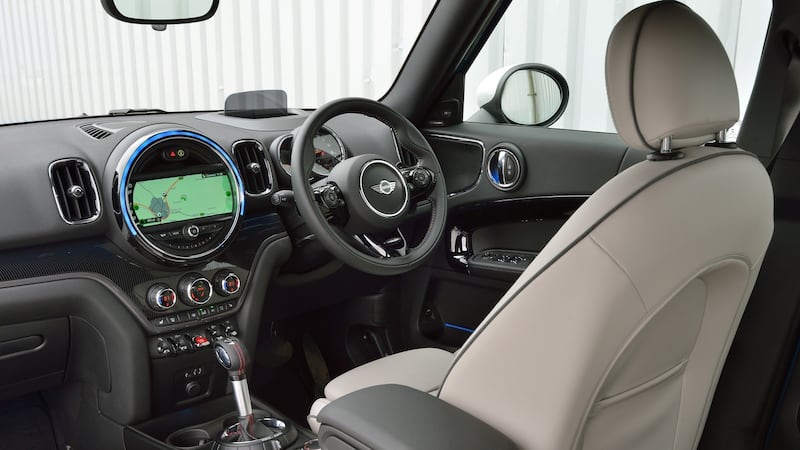Someone in the BMW and Mini organisation clearly lacks the chutzpah to drag out the old "Maxi" nameplate when it comes to naming new models. How better to describe a Mini that most certainly isn't mini at all – one that stretches to 4.3 metres in length and boasts a boot bigger than a Nissan Qashqai.
Perhaps, though, invoking the image of rusty, badly made British Leyland 1970s abominations isn’t quite the right tone to strike.
Still, there’s no doubting the maximal nature of the new Mini Countryman. The second generation of Mini’s small (small? pah!) crossover doesn’t deviate much in style terms from its predecessor.


Indeed, it's only the true wearers of anoraks who will be able to spot the squarer shape to the headlights and the faintly flatter profile of the roof. It's not perhaps the handsomest car of all, and it certainly lacks the cute-as-a-button looks of the Mini hatchback, but there's a certain appeal to it, even if the bulk and size makes a mockery of the Cooper stripes on the bonnet (John Cooper would have laughed such a car out of the garage for being so overweight, albeit he'd have enjoyed the profit margins . . .).
Bulk brings benefits of course and as has always been the idea behind the Countryman in the first place, here is a Mini into which you can trade up when children and lifestyle dictate a requirement for more legroom and a bigger boot.
That boot, incidentally, can stretch from 450 litres with the rear seats up (and no spare wheel – the Countryman runs, as do all Mini models, on run-flat tyres) to 1,350 litres with the back pews folded flat which is definitely at the capacious end of things. It was once a boast of one’s Tetris abilities to say that one could move house with a Mini. Now, it would be easy.
Rear legroom and headroom is also excellent, and while the rear bench is probably a gnat’s too narrow for three child car seats abreast, there are now three ISOFIX points (two in the back, one in the front) to maximise the family-friendliness.
Messy layout
Up front, there are grippy but accommodating seats, and a general sense of better-than-decent quality, although the optional pale leather upholstery of our Cooper S test car definitely lightened the cabin ambience more than a little. If it had been all black, it would have verged on the gloomy.
The layout is a bit of a mess, though. I’ve no objection to buttons, which is just as well as there are many, all scattered about. But the whole concept of putting a rectangular centre screen in a circular space in the dash is just ridiculous.
It’s the same across the current Mini range, maintaining the shape if not the purpose of the 2001 model’s dinner-plate sized speedo, but it just never looks right.
Better are the chunky steering wheel, which feels rather pleasant in your hands, and the well-sorted driving position. You sit high-ish, as befits the car’s crossover ambitions, but it’s comfy enough.
The model range will be dominated by the 2.0-litre Cooper diesel model in Ireland, which comes in 150hp D form or 190hp SD form. With CO2 emissions ranging from 113g/km to 125g/km, both diesel models should have relatively modest running costs, especially when one takes into account the premium aspirations (and indeed reality) of the Mini brand. Guess which version we didn't get to drive?
Instead, we had a 192hp 2.0-litre turbo petrol Cooper S All4 automatic, or about as unlikely a Mini as you’ll ever see on Irish roads. Quite apart from the fact that Countryman models only account for around a fifth of Mini’s 500-odd annual Irish sales (Mini is hoping that the extra space of this model might snare a few more buyers), a Mini with four-wheel drive, an auto box, Band C tax rates and a claimed 44mpg (which means closer to 30mpg in real use) doesn’t seem like the kind of car most sane people would drive.
Four-wheel drive
And they’d be right not to. With the four-wheel drive system, the Countryman weighs in at a whopping 1,500kg which even considering its a crossover is pretty chunky. That weight makes mincemeat of the Cooper S engine – 192hp and 280Nm of torque simply can’t do much against that much mass – and consequently, in spite of a lot of engine noise and thrash, the Cooper S Countryman doesn’t actually move all that quickly.
An official 0-100km/h time of 7.2secs seems to flatter it, and you’ll most likely be far better off with the solid 330Nm of the Cooper D.
There are high points, though. The all-wheel drive was, for all its portliness, actually rather welcome given that our test route wound across the home counties of England on a soaking wet day, the grip levels reduced further by a liberal scattering of leaf mulch.
Here, on home turf (Mini’s Oxford factory is only just up the road, although the Countryman is actually built in the Netherlands) the weighty, responsive steering and peerless body control (whose cost in ride comfort is not as bad as once it was) come into their own. For all the weight, the Countryman is good fun to chuck around the place.
It’s not good value, though. With prices starting at just over €33,000 for the most basic Countryman, and more than €38,000 for a Cooper S without 4WD, there are bigger, better value family cars to be had.
You would have to be both well-heeled enough and sufficiently smitten with Mini as a brand and as an idea to justify that kind out outlay on a tall-ish family car.
The same cash would buy you a far more roomy model from Volkswagen, Seat, Nissan, Mazda and many others. You couldn't objectively justify it, but it's fair to say that there is no small crossover that's better to drive. Does that really matter to most of the target market? Probably not.
The lowdown: Mini Countryman Cooper S ALL4 Automatic
Price: as tested, €43,400. Range starts at €33,580.
Power: 192hp.
Torque: 280Nm.
0-100km/h: 7.2sec.
Top speed: 222km/h.
Claimed economy 44.1mpg (6.4-l/100km).
CO2 emissions: 146g/km.
Motor tax: €390 per annum.
Verdict: Fun and practical but searingly expensive.












